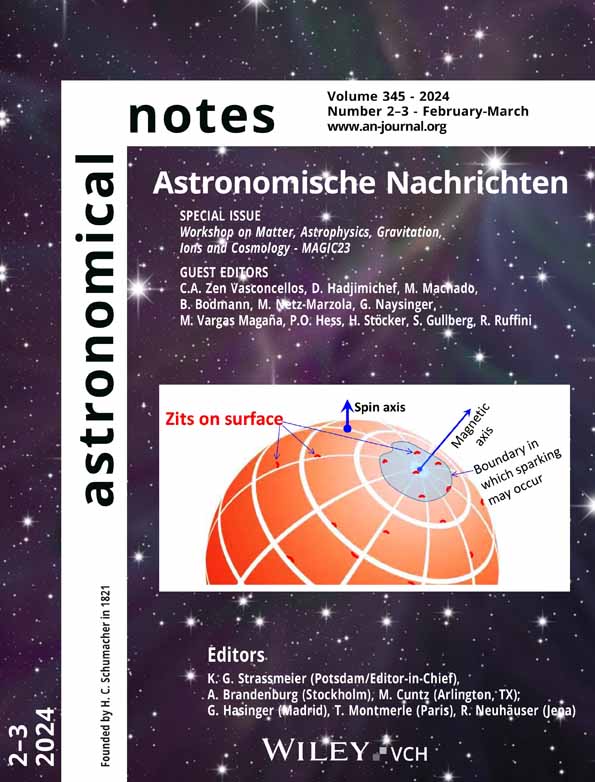Particle acceleration test with Cas A multiwavelength emission
Abstract
The investigation of supernova remnants (SNRs) across the electromagnetic spectrum from radio up to very high energy gamma-rays can serve as a test of the particle acceleration and touches on one of the unresolved problems of modern astrophysics, namely the origin of cosmic rays and the Galaxy's contribution to the overall cosmic ray spectrum. The multiwavelength observations of Cas A SNR demonstrated that structure and spectral features have clear signs of young SNRs and its overall properties make this object the best target to test a hypothesis of cosmic ray origin in SNRs. Studies of Cas A at very high energies by SHALON telescope showed the location of TeV gamma-ray emission region relative to the position of reveres shock. Also, the spectral energy distribution was obtained at high and very high energies. To describe the spectral and structural features of this SNR viewed in non-thermal emission, two approaches involving reverse and also both reverse and forward shocks to the mechanism of diffusive shock acceleration of cosmic rays in Cas A were applied. It is demonstrated that the observational properties of Cas A are well reproduced by the hadronic model with significant contribution of both the forward and reverse shocks in the generation of broadband emission. Calculation results suggest that the very high efficiency of particle acceleration in Cas A, which value is up to 25% of the supernova explosion energy with energy of accelerated particles not exceeding of eV. Whereas, the forward shock model predicts the spectral characteristics of the TeV-gamma-emission corresponding to ones detected at 800 GeV–40 TeV that are the evidence of acceleration of the hadronic cosmic rays in shells of SNRs up to eV




